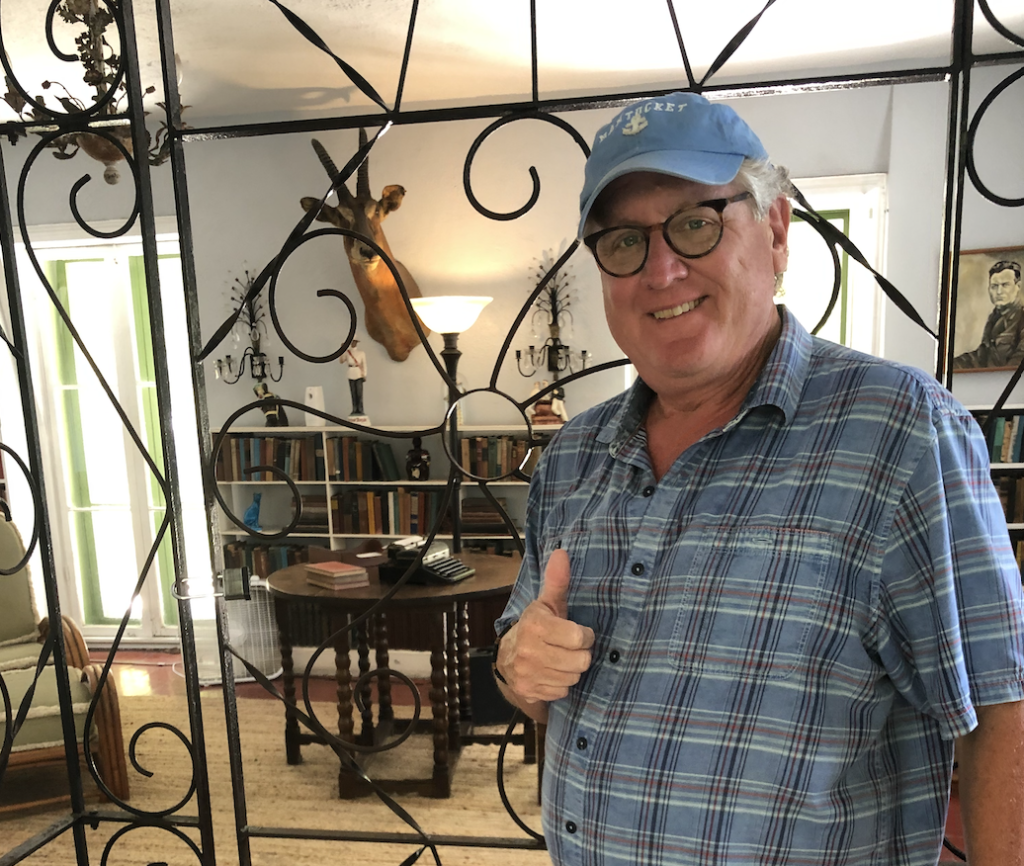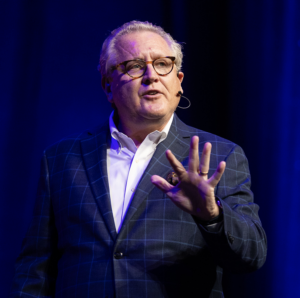
I recently visited Ernest Hemingway’s writing room at his home in Key West, Florida.
Ernest Hemingway is one of my favorite writers. He’s surely influenced my sparse style. If it doesn’t move the story along … get rid of it! He also offered me a fool-proof method to break writer’s block.
I recently re-read A Moveable Feast. a fascinating account of his early years in Paris and beyond. It re-introduced me to one of the all-time best quotes about creating content, and I wanted to share it with you. Hemingway writes about his sure-fire way of breaking through writer’s block:
So finally I would write one true sentence, and then go on from there. It was easy then because there was always one true sentence that I knew or had seen or had heard someone say. If I started to write elaborately, or like someone introducing or presenting something, I found that I could cut that scrollwork or ornament out and throw it away and start with the first true simple declarative sentence I had written. Up in that room I decided that I would write one story about each thing that I knew about. I was trying to do this all the time I was writing, and it was good and severe discipline.
I like this idea because everyone should be able to name at least one true sentence, right?
The way this works for me is simple. There is so much that is untrue on the internet, and specifically in the marketing world. Many of my blog posts come from thinking, “That is just not right. Here is what is true to me.”
Often, I’ll just write down a bare idea as a headline in WordPress to be considered later. If you look at the recent videos I’ve published on YouTube, they all emanate from just saying something true to me on that day.
- Developing a brand means being relentlessly relevant
- Stop blaming short attention spans
- Why the most human company wins
Just do it.
Matt Bell suggests not over-thinking the creative process. Don’t even do a draft. Let the draft come organically:
What I’ve found is that overplanning before beginning writing risks blocking opportunities for discovery and surprise. Rather than dutifully following an outline, I want to be guided by what appears on the page as I write, by the emerging desires of characters and the dramatic demands of drafted scenes as well as by the acoustics of my sentences and the possibilities of the narrator’s voice.
I’m not the only writer who proceeds in this way. Of his own drafts, Robert Boswell writes, “I come to know my stories by writing my way into them … It would feel dutiful instead of exciting.”
My approach
I have a hybrid approach. I often start blog posts with “one true sentence,” but when it comes to a book, I definitely need an outline to guide me. I don’t have the luxury of being a professional writer with loads of time to let a book work itself into being. I’m a busy guy and start with at least a roadmap of where I’m going.
Still, even with the most complicated of projects, I just let it flow. I write and write and write and then go back later to make it flow in a beautiful way.
One true sentence. It helped break writer’s block for Hemingway in 1964. It works for me, and it can work for you.
 Need a keynote speaker? Mark Schaefer is the most trusted voice in marketing. Your conference guests will buzz about his insights long after your event! Mark is the author of some of the world’s bestselling marketing books, a college educator, and an advisor to many of the world’s largest brands. Contact Mark to have him bring a fun, meaningful, and memorable presentation to your company event or conference.
Need a keynote speaker? Mark Schaefer is the most trusted voice in marketing. Your conference guests will buzz about his insights long after your event! Mark is the author of some of the world’s bestselling marketing books, a college educator, and an advisor to many of the world’s largest brands. Contact Mark to have him bring a fun, meaningful, and memorable presentation to your company event or conference.


